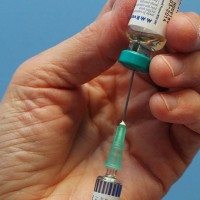A common theme in alternative medicine is the “One True Cause of All Disease”. Aside from the pitiable naivete, it’s implausible that “acidic diet”, liver flukes, colonic debris, the Lyme spirochete, or any other problem—real or imagined—can cause “all disease” (in addition to the fact that most of these ideas are intrinsically mutually exclusive).
One of the popular new ideas in this category is that of “endocrine disrupting chemicals” (EDCs). These are chemicals in the environment that physiologically or chemically mimic naturally occurring human hormones. That some environmental substances are chemically similar to human hormones is indisputable. That these substances can have a real physiologic effect in vitro seems to hold up. How much of an effect these chemicals may have in real human populations is an open question.
And unlike many similar ideas, there are a lot of plausible questions that are under investigation. And this is where I fear our colleagues in the media lose it. The media can be an effective source of public health information, even a tool to improve public health, but when the media unleashes a torrent of premature speculation, science and the public health lose. This is where the Times’s Nicholas Kristoff comes in. On Sunday, he asked these questions:
The battle over health care focuses on access to insurance, or tempests like the one that erupted over new mammogram guidelines.
But what about broader public health challenges? What if breast cancer in the United States has less to do with insurance or mammograms and more to do with contaminants in our water or air — or in certain plastic containers in our kitchens? What if the surge in asthma and childhood leukemia reflect, in part, the poisons we impose upon ourselves?
We have many examples of human-made environmental chemicals causing disease. Often, a cluster of disease is identified, and then a common exposure is found, and further study confirms a likely causal relationship. For example, in the 20th century, thousands of people in Minamata, Japan fell ill and died from a mysterious neurological ailment. Investigation found that industrial methyl mercury contamination had entered the seafood chain and was the responsible agent.
Conversely, suspect contaminated regions can be identified, and then clusters of disease can be sought. This is a bit trickier, but still a legitimate way of investigating a relationship. The Michigan PBB incident in one such example in which health effects were hard to nail down. Cigarette smoking as a cause of cancer was a bit more clear.
A less effective way to approach this type of problem is to have neither a clear disease cluster nor a clear exposure group. This is the mistake made by Kristoff. He relates EDCs to several problems, but focuses on breast cancer, drawing a line from EDCs to early puberty, to longer time from menarche to menopause, to increased breast cancer rates. While this is not implausible, it’s pretty damned tenuous. In order to see if EDCs are really causing breast cancer in significant numbers, we should establish both a correlation between exposure to specific chemicals and excess cases of breast cancer. We should also have a laboratory model for the connection.
The problem here from a science-based medicine perspective is not the implausibility but the oversimplification and naive, hyperbolic conclusions. Kristoff cites a 56-page report from the Endocrine Society, which was much more circumspect and called for further study of the issue. I can understand the desire to communicate an important health story to the public, but choosing an emotionally charged issue like breast cancer and linking it to everyday substances that everyone uses blurs the issue more than it clarifies. It incites emotion without asking clear, important questions.
When I’ve talked to experienced public health experts about EDCs, they’ve given me a noncommittal, “yeah, there could be something to that,” but none that I’ve read have been willing to call this a major public health threat. We know the causes of lots of cancers. We know how to screen for many important cancers, which allows for early detection and treatment. Some cancers we can actually prevent by limiting environmental exposures; many lung cancers could be prevented by eliminating exposure to cigarette smoke. Whether any cancers can be prevented by banning putative EDCs is a question that’s barely been asked, much less answered.

